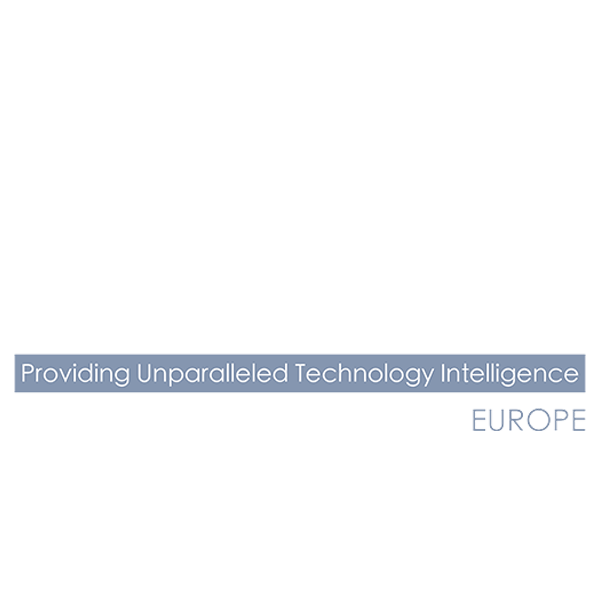The cybersecurity industry is increasingly turning its gaze towards parametric solutions, data-driven models that promise a more quantifiable and scalable approach to managing digital risk.
With the average organisation now facing over 1,800 cyber attacks per week globally in late 2024 – a staggering 75% year-on-year increase – and the financial fallout projected to reach $15.63 trillion annually by 2029, the need for innovative risk management is critical. Even the cost of insuring against these threats is a significant consideration, with small UK businesses facing average cyber insurance premiums of around £1,400 annually, a figure that can fluctuate wildly based on risk profile and the amount of data handled.
Parametric models offer the allure of objective risk assessments, faster incident response triggered by predefined thresholds and potentially even predictive capabilities. However, can these rigid frameworks truly account for the cunning and adaptability of modern cyber adversaries? Are we in danger of prioritising easily measurable metrics over the nuanced understanding of attack vectors and motivations?
Our expert panel explores the practical pros and cons of embracing parametric solutions in cybersecurity, delving into real-world applications, their effectiveness against prevalent threats – and consider whether the potential for automation and efficiency outweighs the risk of oversimplification in a constantly evolving threat landscape.
Alexis Cierra Vaughn, CEO of Off Course, Distribution Executive, cyber insurance expert
It’s going to be fascinating to watch how parametric solutions continue to evolve within the cybersecurity space. Cyber incidents are incredibly nuanced and unlike property or weather-related risks, the full extent of a cyber event often isn’t known for weeks or even months. That delay and the complexity of cyber claims make it difficult to apply parametric solutions in the traditional way we see in other insurance sectors.

Every cyber claim is unique for small to mid-sized businesses. Parametrics function effectively by using predefined triggers and high volumes of similar claim events. That model can be challenging when no two breaches are alike. However, I do see promise for parametric products in more predictable, lower-severity events, like phishing campaigns or basic identity theft, where outcomes and triggers can be standardised across a large population. These scenarios might even be better suited for personal cyber coverage, where volume and simplicity are more achievable.
Some cyber products mirror parametric logic through narrowly defined endorsements, such as a payout triggered solely by a data breach. But where parametrics go further is in covering gaps that traditional or standalone cyber policies typically exclude. One of the key advantages is faster payouts without requiring proof of loss, which can streamline recovery for the insured. However, that same speed and simplicity could pose challenges for cybersecurity professionals. Without the need for forensic accounting or ransom negotiations, it raises questions about how incident response and expert services will integrate into the claims process.
That said, the clarity and simplicity of a parametric cyber product, especially in terms of measurable triggers, could bring much-needed transparency to a complex product line. The use of inside-out data and robust risk modeling will be essential here. This approach aligns well with the direction many cyber insurers and reinsurers are heading: towards data-driven underwriting and claims efficiency.
One of the most promising aspects of parametric cyber insurance is its potential to accelerate recovery for SMEs and mid-market companies. With a clearly defined trigger and a built-in incident response process, insureds can focus on continuity instead of navigating a lengthy claims investigation. That speed could also increase reinsurers’ confidence, possibly opening the door for expanded cyber capacity in the global market.
Of course, there are trade-offs. Payouts may not always match actual losses since cyber risk is anything but standardised. Every organisation has different vulnerabilities, tech stacks and regulatory exposures. Parametric solutions won’t be a one-size-fits-all fix, but they can serve as a strategic complement when tailored cyber coverage isn’t accessible.
At the end of the day, I see parametric cyber products not as a replacement for traditional cyber insurance, but as a smart enhancement. For some clients, it might be the only viable option. For others, it’s a powerful addition to their overall cyber risk strategy. If done right, parametric insurance has the potential to help us achieve what we’re all working toward: true cyber resilience.
Rohit Sadhu, Co-Founder & COO, Ensuredit Technologies
At its essence, parametric insurance replaces ambiguity with clarity. Rather than reimbursing actual losses after protracted claims investigations, it pays out automatically when a pre-defined event occurs, such as a cloud outage that lasts over three hours, or a ransomware encryption rate that exceeds 40% of an organisation’s endpoints.

This change may sound procedural, but its implications are profound. In the age of instant disruption, speed is not a luxury, it’s a necessity. The first 72 hours after a breach often determine whether a business weathers the storm or spirals into crisis. Parametric coverage delivers rapid liquidity at the exact moment it’s needed most, empowering leaders to restore operations, preserve trust, and make bold decisions when others are still waiting for adjusters. It also brings radical transparency to a traditionally murky process. When terms are clearly defined in binary terms, ‘if X happens, you get Y’, insurance becomes a strategic tool, not just a compliance requirement.
The real power of parametric insurance lies not just in how it pays, but in how it thinks. It forces both insurers and insureds to define, measure and quantify cyber risk in concrete terms. In a world powered by APIs, microservices, and decentralized architectures, static risk models no longer suffice. Parametric insurance aligns incentives around real-time telemetry, shared metrics and verifiable thresholds, opening the door to smarter underwriting, proactive defences and dynamic pricing.
It also shifts the narrative. Cyber insurance is no longer about ‘how much will we recover?’ but ‘how quickly can we bounce back?’ That mindset difference is the foundation of enterprise resilience.
Imagine a future where insurance is embedded directly into your cloud infrastructure. Where risk coverage flexes dynamically with system load, geography, or vendor uptime. Where payouts are triggered by smart contracts rather than claims forms? That future starts with parametric models.
But vision comes with responsibility. The challenge now is to refine the architecture: calibrating triggers to reflect real business impact, closing the gap on basis risk and building regulatory frameworks that keep pace with innovation. It requires collaboration across insurers, tech platforms, regulators and risk managers to make parametric cyber insurance a foundational pillar of digital trust.
But for all its strengths, parametric cyber insurance is not without fault. As with any innovation, its early-stage evolution presents important limitations. Parametric coverage pays based on occurrence, not impact. That means an organisation may receive a payout even if its actual loss is minimal or worse, suffer significant damages without triggering the payout. This ‘basis risk’ is its Achilles’ heel and can erode trust if not addressed with precision.
Triggers must be specific enough to avoid ambiguity but broad enough to reflect a wide range of real-world attacks. If miscalibrated, coverage can become either ineffective or overly generous – either a false sense of security or an actuarial liability.
The promise of parametric models assumes access to transparent, real-time data and third-party verification mechanisms – something not equally available across geographies or industries.
Leaders who understand this shift won’t just buy parametric coverage – they’ll build ecosystems around it. They’ll use it to signal cyber maturity, unlock operational flexibility and align capital with risk in real time.
Arda Büyükkaya, Senior Threat Intelligence Analyst at EclecticIQ
As cyberattacks grow in frequency, sophistication and financial impact, traditional cyber insurance models are increasingly being put to the test. In response, parametric-style cybersecurity insurance has emerged as an innovative alternative, offering businesses a new way to manage and transfer cyber risk.

This model relies on pre-agreed triggers; specific, measurable events such as a defined level of system downtime or a particular type of breach, that automatically activate a payout, regardless of the actual financial loss incurred. While this approach brings speed, clarity and operational benefits, it also comes with significant limitations and complexities.
One of the most compelling advantages of parametric insurance is the rapidity of its payouts. Unlike traditional indemnity-based policies, which often require lengthy investigations to quantify losses, parametric models enable fast claims settlements. This quick infusion of funds can be invaluable during a crisis, helping businesses maintain operations, stabilise cash flow and recover faster.
The clarity and predictability of parametric policies also make them attractive. With a predefined set of triggers and payout amounts, businesses can gain a more accurate understanding of their risk exposure and align insurance strategies with financial planning goals. This level of transparency reduces the potential for disputes between insurers and insured parties, which is particularly important during high pressure cyber incidents when swift decision-making is critical.
Another advantage is the ability of parametric models to cover certain hard-to-insure risks that traditional insurers might avoid or overly price. Events such as cloud service provider outages or targeted ransomware attacks can often be modelled effectively using data and third-party metrics, enabling coverage where it previously may not have been possible. Furthermore, when integrated with advanced monitoring tools and real-time threat intelligence, parametric insurance can form part of a broader, tech-enabled risk management strategy that responds dynamically to the evolving cyber landscape.
However, this model is not without its drawbacks. The most prominent concern is basis risk – the misalignment between the trigger event and the actual financial impact. For example, a business might suffer substantial losses from a breach that does not meet the policy’s trigger criteria, leaving it without compensation. Conversely, a payout might be made for an incident that causes little or no real harm, which could distort the value proposition for both parties. Defining effective triggers requires accurate, real-time, and verifiable data – something that is often hard to obtain in the complex and fast-moving world of cyberthreats.
Cost is another consideration. While parametric policies offer rapid relief, they can be expensive to design and administer, particularly when custom triggers are involved. Additionally, most businesses cannot rely on parametric coverage alone. These policies typically do not account for broader financial impacts, such as reputational damage, legal fees, or regulatory fines, making them more suitable as a supplement to, rather than a replacement for, traditional cyber insurance.
Parametric cyber insurance offers a compelling and innovative tool for mitigating cyber-risk, particularly for organisations seeking faster payouts and greater clarity in coverage. However, to be truly effective, it must be implemented as part of a broader, layered insurance and risk management strategy, one that balances speed and certainty with the need for comprehensive protection.



